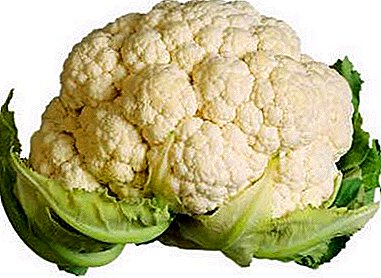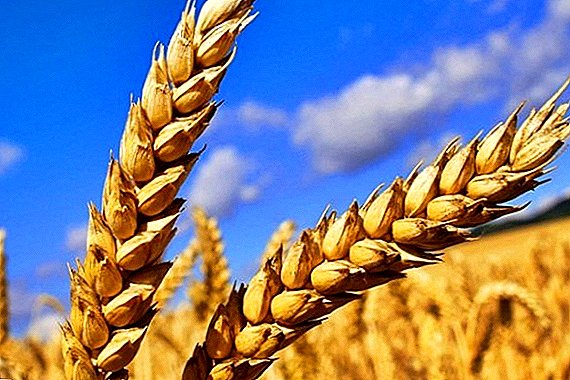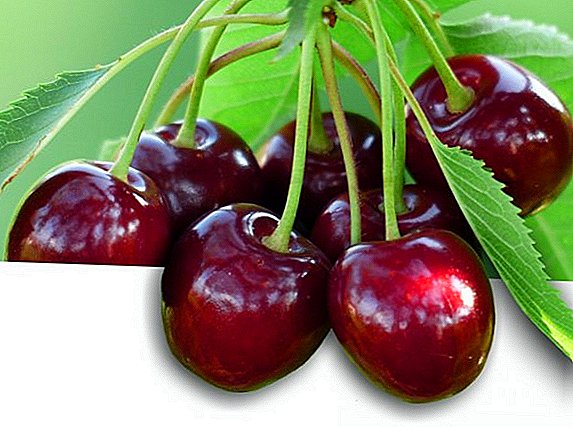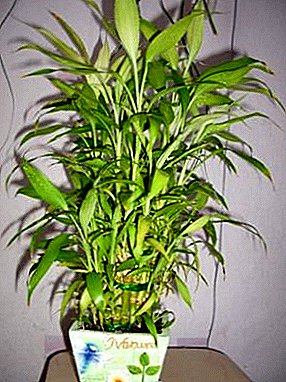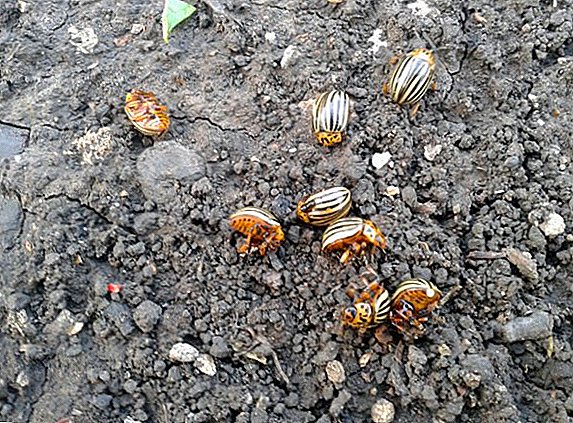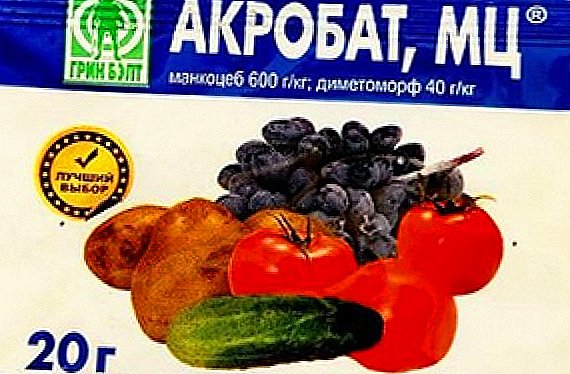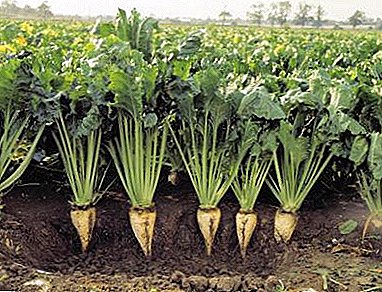 The tomato with the original name Banana Legs, or Banana Legs in the original, was bred in the USA in the late 80s of the last century. The variety quickly gained popularity among farmers and summer residents. Let's talk about its characteristics and secrets of cultivation today.
The tomato with the original name Banana Legs, or Banana Legs in the original, was bred in the USA in the late 80s of the last century. The variety quickly gained popularity among farmers and summer residents. Let's talk about its characteristics and secrets of cultivation today.
Variety description
The bush of determinant type in open ground grows to a meter high, in greenhouse conditions it can stretch up to half a meter. Branched bush, with a patterned, velvety to the touch foliage.
Among the advantages note:
- high yield;
- lack of tendency to diseases characteristic of tomatoes;
- uniform ripening;
- no tendency to cracking the skin;
- adaptation to weather changes;
- unusual savory taste;
- the ability to grow direct sowing in the ground;
- good storage performance;
- excellent transportation.
Check out the determinant varieties of tomatoes: "Raspberry Giant", "Klusha", "Chocolate", "Rio Fuego", "Riddle", "Stolypin", "Sanka", "Apparently-invisible", "Lazy", "Bobcat", "Liana", "Newbie", "Balcony Miracle", "Chio-Chio-San".According to reviews of gardeners, gardeners, the variety has no significant shortcomings.

Fruit characteristics and yield
A variety of medium ripening - on average, after 70 days the fruit is ready for harvest. Up to 5.5 kg of crop can be harvested from one bush. The future harvest is formed by brushes of 8-10 fruits, of elongated shape, up to 12 cm.
Did you know? South American Indians, who first began to grow tomatoes as a cultivated plant, valued not only the food quality of the product. The pulp of the fruit they used to heal wounds. Modern science has established that the fruit contains a large number of phytoncids that destroy pathogenic bacteria and infections.
Greenhouse fruits differ in weight in 90-110 g, grown on open ground - 70-85 g. Unripe tomatoes on a yellow background have longitudinal green stripes, which, as the fruit is poured in an orange tone, disappear.
The fruit is fleshy and juicy, inside it has no more than 3-4 chambers and few seeds. The flesh is sour and leaves a lemon aftertaste. 
Selection of seedlings
Criteria for the selection of productive seedlings:
- the presence of 7-8 developed and green leaves;
- semidetoid knee on the leaves should be short;
- the absence of brown spots and moldy blotches;
- thick central stem;
- the presence of at least three branches;
- root system branched;
- roots without damage, elastic, with soil particles.
Find out when to plant tomato seedlings in open ground.
Growing conditions
For landing you need to pick up a place open to the sun, but closed from the draft. The location of groundwater should not be close to the surface, and the site itself is lowland. The constant presence of thawed snow or rainwater will lead to plant diseases.  Tomatoes need fertile land with an acidity close to the neutral index - 6-7 pH. Too acidic soil is “diluted” by liming. To saturate the site with nutrients, it is prepared in the fall: they dig it in, bringing in humus or manure with mineral additives (potassium and phosphorus salts).
Tomatoes need fertile land with an acidity close to the neutral index - 6-7 pH. Too acidic soil is “diluted” by liming. To saturate the site with nutrients, it is prepared in the fall: they dig it in, bringing in humus or manure with mineral additives (potassium and phosphorus salts).
Landing is carried out in May or June, when there is no threat of return frost. If there is a suspicion of a cold snap, the landing can be covered with agrofibre. The procedure is carried out either on a cloudy day or in the evening.
Important! It is not recommended to plant the culture after potatoes and solanas. The best predecessors will be bulbous, carrots, cucumbers.
Seed preparation and planting
Seed start about two months before the estimated date of planting. The material must be processed for the prevention of diseases, for this, it is pre-moistened, placed in a solution of potassium permanganate for three hours.
The soil prepared for sowing must also be treated with either the same solution of manganese or boiling water. Prepare the substrate from two parts of the turf ground, part of the sand and part of the humus. For nutritional value add 50 g of chalk and 10 g of wood ash.  Soil is moistened and planted with seeds according to this scheme:
Soil is moistened and planted with seeds according to this scheme:
- between seeds maintain a distance of 2 cm;
- between rows - a distance of 5 cm.
After the appearance of 3-4 strong leaves, saplings dive into separate containers, the temperature is again raised to + 18-20 ° C. At this time, the first time the root feeding of the plant is carried out, usually complex preparations are used, for example, Agricola. The second feeding is carried out in a week, in another week - the third.
Important! A week before transplanting into the open ground, seedlings need to be hardened: take out to the balcony or veranda, first by an hour, gradually increasing the “walk” time to a day.
Maintenance and care
Transplanting seedlings in open ground, expect that 1 square. m should be no more than four bushes. Thickened planting is an ideal breeding ground for bacterial diseases.  Watering begins to begin a week after planting, it is advisable to do it in the evening, using water at room temperature. The irrigation rate is about 25 liters per 1 square. m
Watering begins to begin a week after planting, it is advisable to do it in the evening, using water at room temperature. The irrigation rate is about 25 liters per 1 square. m
The frequency of irrigation depends on the weather and the drying of the topsoil. If the possibility of frequent watering is not, you can cover planting mulch: it will save moisture, and stop the growth of weeds.
The next day after watering, the soil at the site is loosened, in order to saturate it with oxygen, weeds are removed.
Did you know? Back in 1959, the scientific journal Scientific American suggested the probability of obtaining tomatoes with a nicotine content. The same idea was voiced in the popular cartoon "The Simpsons", and in 2003 implemented by Rob Baur, a farmer from Oregon. He planted a tomato on tobacco and as a result received a new crop - tomak.
As they grow, the bush is formed into three stems, the extra stepchildren are removed and the support is established, because the brushes with fruits have an impressive weight, they can break the stem.  10 days after planting, the first feeding is carried out, it is possible to use both mineral complexes and organic matter. The main thing to consider is that during the growing season the plants need nitrogen. The following root dressings already with a predominance of phosphorus and potassium are needed during the flowering and formation of the ovaries. Between the root dressings it is possible to spray mineral complexes, the interval between them is 2-3 weeks.
10 days after planting, the first feeding is carried out, it is possible to use both mineral complexes and organic matter. The main thing to consider is that during the growing season the plants need nitrogen. The following root dressings already with a predominance of phosphorus and potassium are needed during the flowering and formation of the ovaries. Between the root dressings it is possible to spray mineral complexes, the interval between them is 2-3 weeks.
Learn how to mulch tomatoes in the greenhouse and in the open field; how to see them in a greenhouse and in the open field; than to feed after planting in the ground and during fruiting.
Disease and pest prevention
Despite disease resistance, some preventive measures will not prevent tomatoes:
- To protect against bacterial ailments, white mustard mulch is used (green manure is sown in a small area, cut at the growth stage, 15 cm).
- During flowering plants are sprayed with garlic infusion.
- They monitor planting density, remove weeds in time.
- Conduct prophylactic spraying ("Oxyh": 2 tablets per 1 liter of water).
- Conduct regular loosening.
- Insect repellent crops are planted between the rows (marigold, wormwood, tansy).
- They set traps.
- With the appearance of using drugs "Karbofos", "Monsoon", "Pirinex".

Harvesting and Storage
In order to preserve the crop as long as possible, it is removed in the stage of light immaturity. Removing the fruit from the bush, the stalk is left: otherwise the fruit is vulnerable to the penetration of bacteria.
Do not store vegetables with damage, even a small scratch on the skin can cause decay next to the stored fruit. The ideal storage place is a cellar or basement, where it is dry and cool.
Learn how to pickle, pickle, ferment tomatoes.
Crop laid out in a single layer on the boxes of wood or cardboard, shifting thick paper (not newspapers).
It is better not to store tomatoes in the refrigerator in large quantities: the longer they are stored, the less they contain nutrients.
Tomato varieties Banana feet can be used for different purposes: canned for the winter, consumed fresh, dried and dried, pickled and sour. Due to the unusual lemon flavor, this variety can be a piquant additive to any dish.
Tomato varieties Banana legs: video
Grade Reviews
I showed myself perfectly in conservation, I was ordered for 2015, I grew in the OG, I didn’t pinch, I was 85 cm tall, the yield was excellent, the taste was sweetish-tomato, led to 2 stems, tied up, 60-70 grams ... decent grade ...





